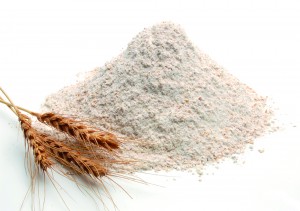The Wonder of Fresh Bread
by Hans Wieland
Ah, those memories of growing up in a little village in the 1950s in Germany with local dairies and butchers, sleeping under cherry trees on balmy June nights, fishing for trout on Sunday mornings at 5am in July, eating grapes from the vines in September, pressing apples in the co-op, and then that smell of freshly baked bread wafting from the small bakery – my uncle’s bakery – on the way to school. I can still see and smell it when we bake bread at home. Fast forward to 2011 and the smell of fresh bread in a certain German superdiscounter. What has happened? What is fresh bread?
For thousands of years, bread has been made in the same way – flour, water and salt combined with yeast as a raising agent – but in 1961 a new method known as the Chorleywood process started the industrial breadmaking era. Hard fats, hydrogenated fats and fractioned fats, flour treatment agents, bleach, soya flour, various emulsifiers, preservatives, and about 10 different enzymes have all become ingredients to reduce the time it takes to make bread and the labour input.
The Chorleywood breadmaking process mills at high speed and high temperatures and allows the flour to absorb more water. In fact, nearly half of your industrial bread is water. It also uses two or three times the usual amount of yeast compared to traditionally made bread, and the large increase in the amount of yeast is cited as one possible cause for the growth of yeast intolerance, irritable bowel syndrome and candidiasis over the past few decades. The large amounts of salt used, double to that in traditional recipes, has been linked to heart disease and raised blood pressure.
Under normal circumstances, bread takes a long time to rise. Sourdoughs, for example, contain a mixed strain of ‘wild’ yeasts and the whole process from dough to finished bread takes around 24 hours. Long yeast fermentation conserves the highest level of B vitamins. For example, around half of vitamin B1 is lost in rapidly made white bread.
What is the alternative to instant industrial bread?
I think, firstly, a change of mind would help. Like the change that has happened with coffee. Freshly made coffee with freshly ground coffee beans is the order of the day, even in a hotel you would now expect to get freshly made coffee rather than instant coffee. So, ask for and buy freshly made bread from basic ingredients and support the real bakers.
Secondly, bake bread yourself and get that smell back into your kitchen! The time you invest will be paid back in highly nutritious bread.
For making fresh coffee you need a coffee grinder and a coffee plunger. Ideally, for making fresh bread you would have a grain mill. The advantages of producing your own flour by milling whole grains compared to buying white flour are obvious: wholegrain flours are richer in vitamins A, B and E, and niacin, and they have a higher content of the minerals potassium, calcium, phosphorus, magnesium and iron. The dietary fibre, which is also a constituent of grain, fulfils very important tasks in our digestion: it remains in the stomach for longer, stimulates bowel activity, and can prevent diseases of the colon.
You could argue that a grain mill is expensive, but here is a little “Milchmaedchen Rechnung” (a simple calculation): if you buy whole grains and bake your own bread, you could save up to €3 per loaf compared to buying the same loaf, that would mean savings of nearly €300 in three months if you ate one loaf of bread a day – the price of a decent grain mill!
Get organised, the choice is yours.
For more information and courses: hans@theorganiccentre.ie
For information on grain mills: gaby@neantog.com
Essential reading: Bread Matters by Andrew Whitley



